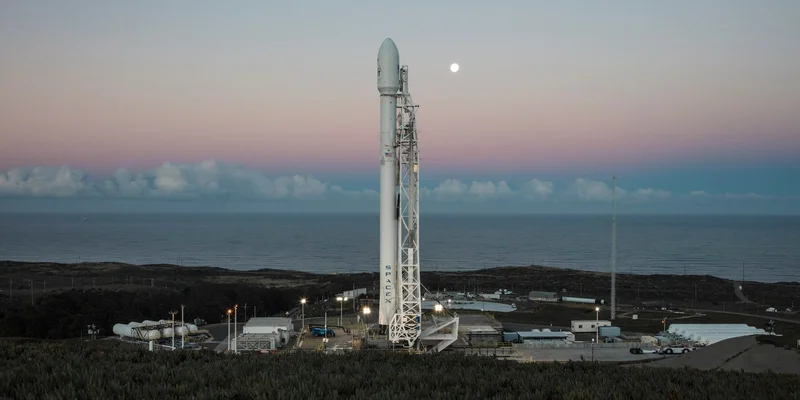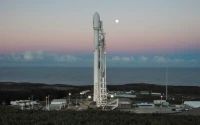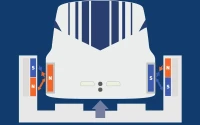The Unstoppable Ascent: Why Florida's 100th Launch Isn't Just a Number, It's a New Dawn
You know, sometimes a number isn’t just a number. Sometimes, it’s a seismic shift, a crack in the old paradigm that lets in a flood of what’s next. And when Florida’s Space Coast hit its 100th orbital rocket launch of 2025 this past November 20th, with a SpaceX Falcon 9 carrying yet another Starlink mission, it wasn’t just a milestone; it was a thunderclap announcing a new era. I honestly just sat back in my chair, speechless, watching that 10:39 p.m. launch from Pad 39A at NASA’s Kennedy Space Center, a glowing spear rising from the humid, inky blackness, and I knew we were witnessing history in real-time.
Think about that for a second. One hundred launches from a single state in a single year. Col. Brian Chatman, commander of Space Launch Delta 45, put it best when he said, "We are breaking records across the board." He wasn't exaggerating. This isn’t just about putting satellites into orbit; it’s about the sheer, audacious cadence of it all. It’s a relentless, accelerating drumbeat that signals something profound about our future, something far beyond mere commercial success. We're not just launching rockets; we're launching the foundations of an entirely new human endeavor.
Just a decade ago, Florida Tech's emeritus space history professor, Robert Taylor, reminds us that 30 to 40 launches a year was considered incredible. During the space shuttle era, 100 flights a year was a pipe dream, utterly unattainable due to the massive turnaround times. Now? We've not only smashed that barrier, but we've done it with such efficiency that the Space Coast has launched more rockets than the entire rest of the world combined, if you take out Vandenberg. That’s not just a lead; that’s a chasm. It's like comparing a horse-drawn carriage to a hyperloop – the underlying mechanics and philosophy of access are fundamentally different. This isn't just about faster rockets; it's about a complete re-engineering of how we interact with the cosmos. It makes you wonder, doesn’t it? What other "impossible" barriers are we about to shatter with this kind of focused, innovative energy?
The Unseen Revolution: From Scarcity to Abundance
This shift, from scarcity to abundance in space access, is the real game-changer here. For so long, getting anything into orbit was an astronomically expensive, painstaking process, reserved for the largest governments and corporations. Now, with companies like SpaceX—and let’s be clear, they’re leading the charge—we’re seeing a radical democratization of space. The Falcon 9, that "frequent flier" as the reports call it, isn't just a marvel of engineering; it's a workhorse, a symbol of reusability making space access economically viable on an unprecedented scale. Booster B1085, making its 12th flight and landing flawlessly on ‘A Shortfall of Gravitas’ out in the Atlantic, isn't just saving money; it's proving that we can treat spaceflight less like a one-off spectacle and more like, dare I say, a routine delivery service.

This isn't just about Starlink, as crucial as that global internet constellation is. This relentless pace is fueling innovation across countless sectors. Think about the research opportunities, the new materials, the manufacturing in zero-G, the Earth observation data that feeds our climate models and agricultural planning. Every single rocket launch, every successful deployment, is another thread woven into the fabric of a more connected, more data-rich, and ultimately, more capable human civilization. What happens when the cost of accessing space drops so low that even small startups and universities can launch their own experiments, their own micro-satellites? The explosion of creativity and progress we’re about to witness could make the internet revolution look like a slow burn.
Of course, with great power comes great responsibility. While the excitement of breaking records is palpable, we also need to be asking critical questions about orbital debris, about the long-term sustainability of such high launch cadences, and about ensuring that this incredible access benefits all of humanity, not just a privileged few. These are the ethical considerations that must accompany our technological leaps, ensuring our future isn't just expansive, but also equitable and sustainable.
Beyond the Horizon: What Comes Next?
The most electrifying part of this isn't what’s already happened; it’s what's coming next. Col. Chatman isn’t just looking at 100 launches as a peak; he sees it as a new baseline. He’s talking about 100 to 120 launches in 2026. And by 2035 to 2040? He projects upwards of 300 launches in a single year from the Space Coast alone! Three hundred! That's almost one launch a day! This isn't just growth; it’s an exponential curve, a hockey stick graph shooting straight up.
Imagine the sheer logistical ballet, the coordination, the technological advancements needed to support that kind of operational tempo. It’s like building a superhighway to the stars, only we’re doing it while simultaneously inventing the cars, the fuel, and the navigation systems. This isn't just about sending things up; it's about the very real possibility of establishing permanent human settlements beyond Earth. We're talking about Mars, about lunar bases, about asteroid mining. This isn't science fiction anymore; it’s the logical, inevitable next step in humanity’s journey, paved one rocket launch at a time. The speed of this is just staggering—it means the gap between today and tomorrow is closing faster than we can even comprehend, pulling us into a future that’s more vibrant, more challenging, and more inspiring than anything we could have dreamed just a few years ago.
The Sky Isn't the Limit Anymore
The 100th launch from Florida's Space Coast isn't just a statistic to be filed away. It's a roar, a declaration that humanity is ready to break free from the confines of a single planet. It's proof that vision, tenacity, and relentless innovation can turn yesterday's impossible dreams into tomorrow's routine. We're not just reaching for the stars anymore; we're building the infrastructure to live among them. And frankly, that's just mind-blowing.










